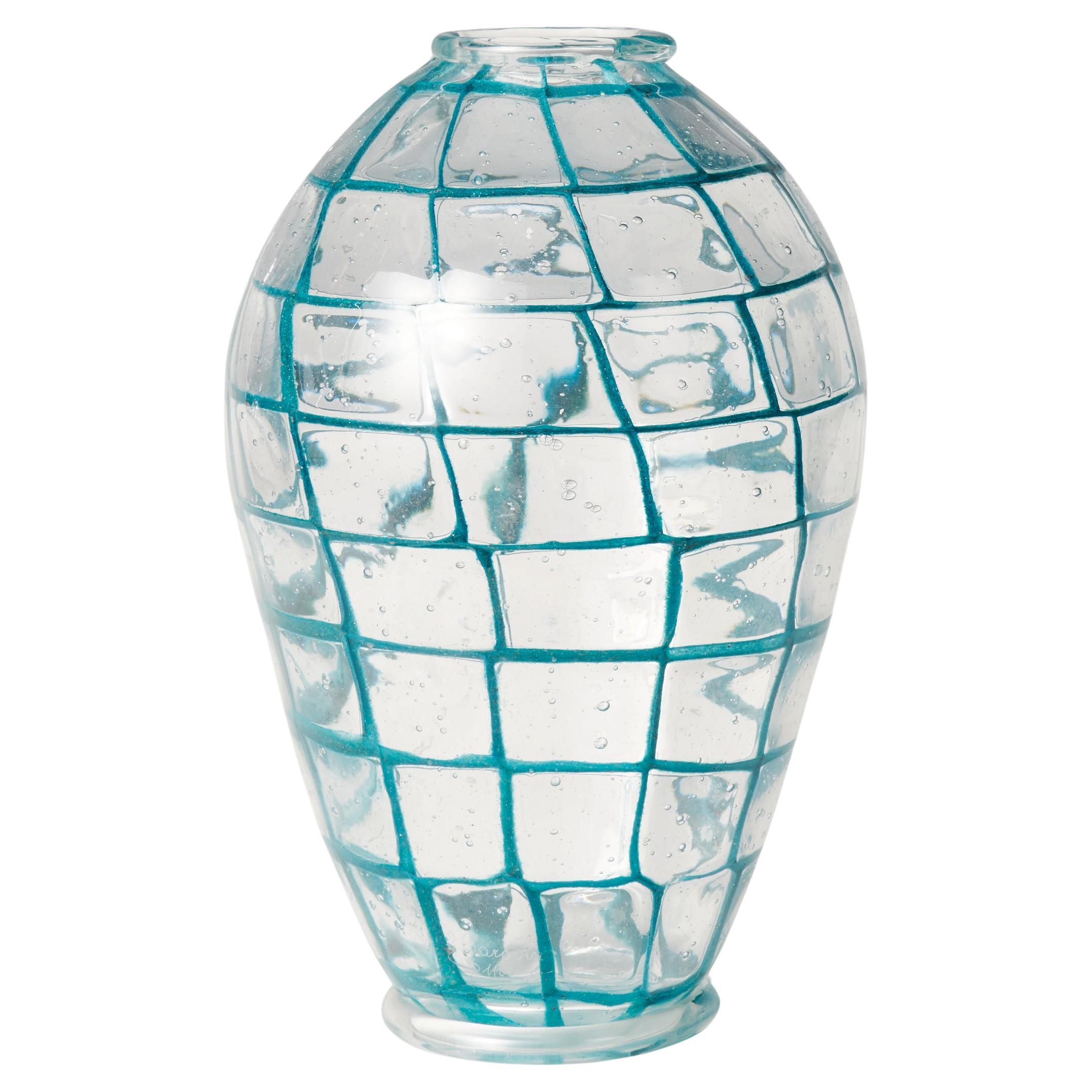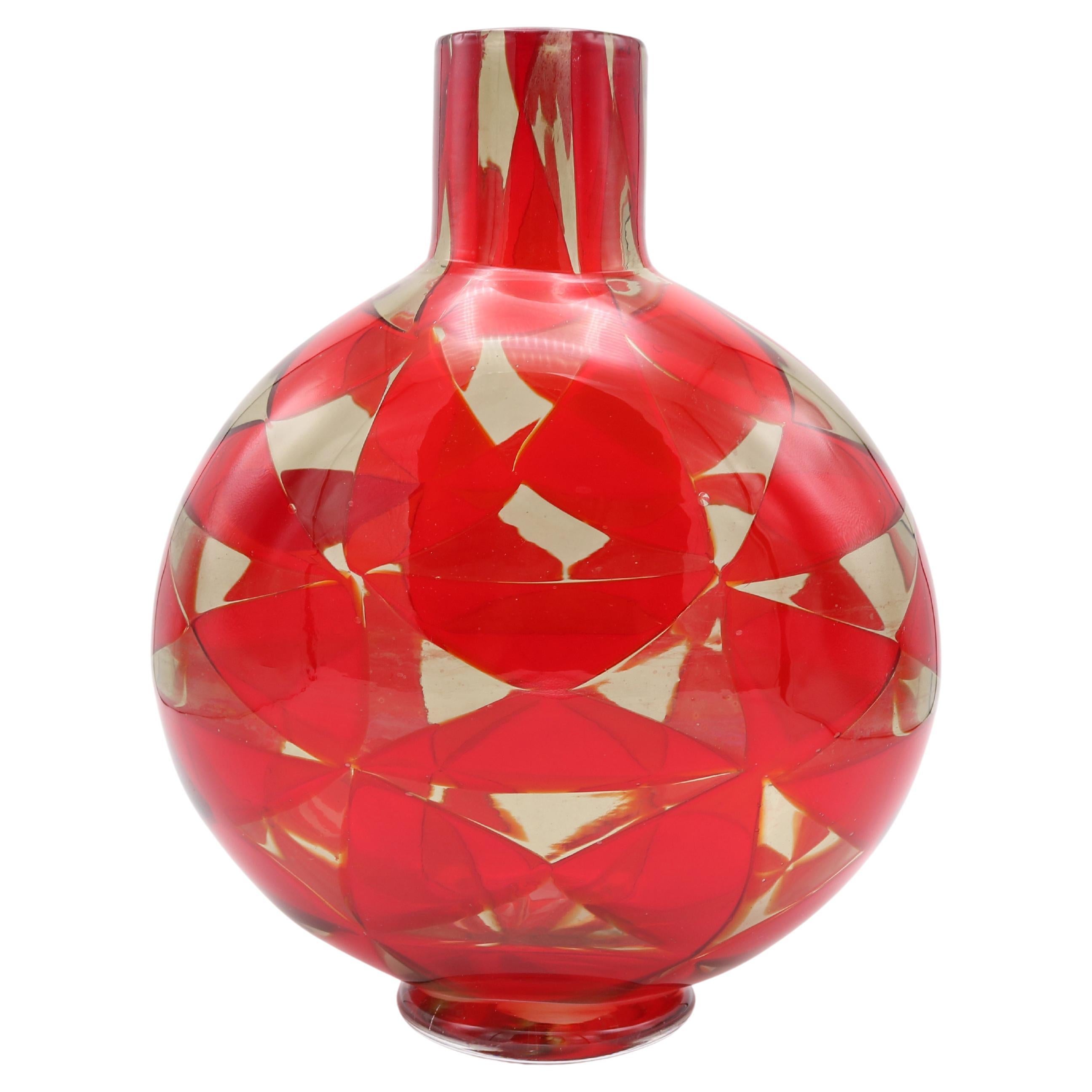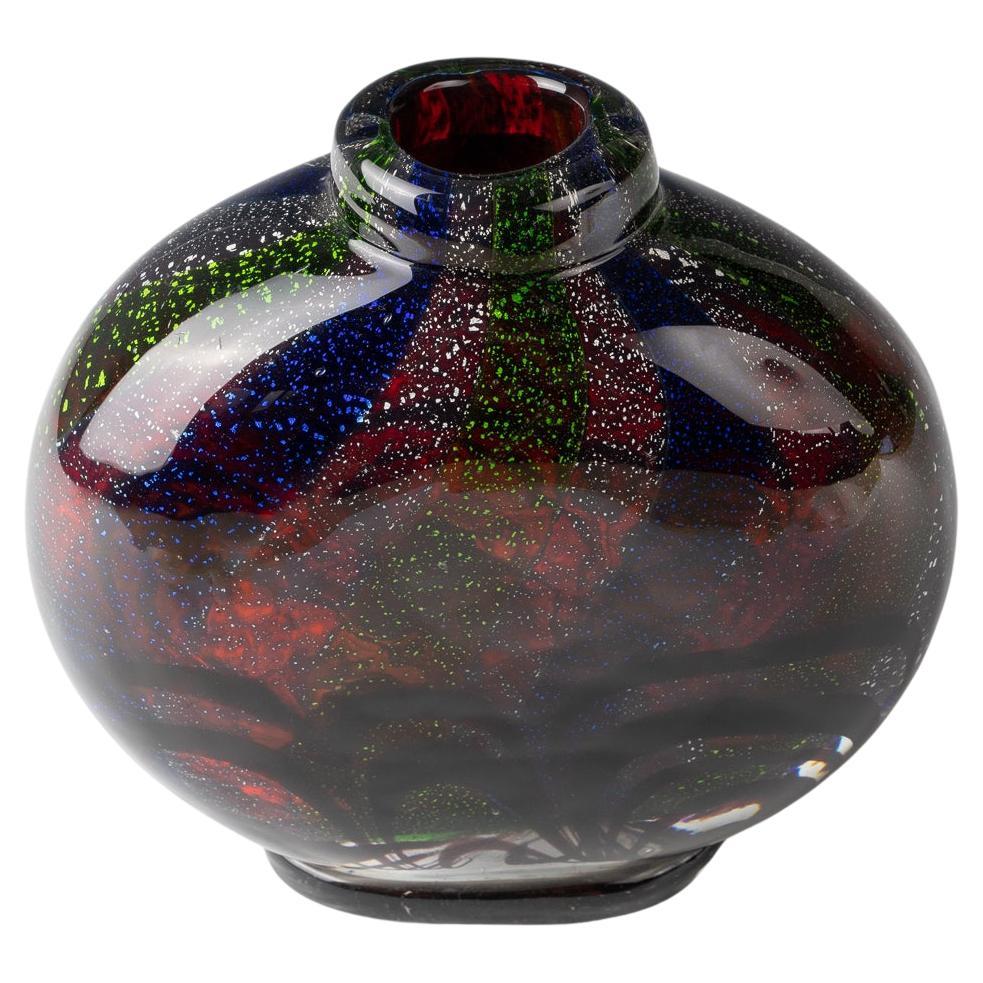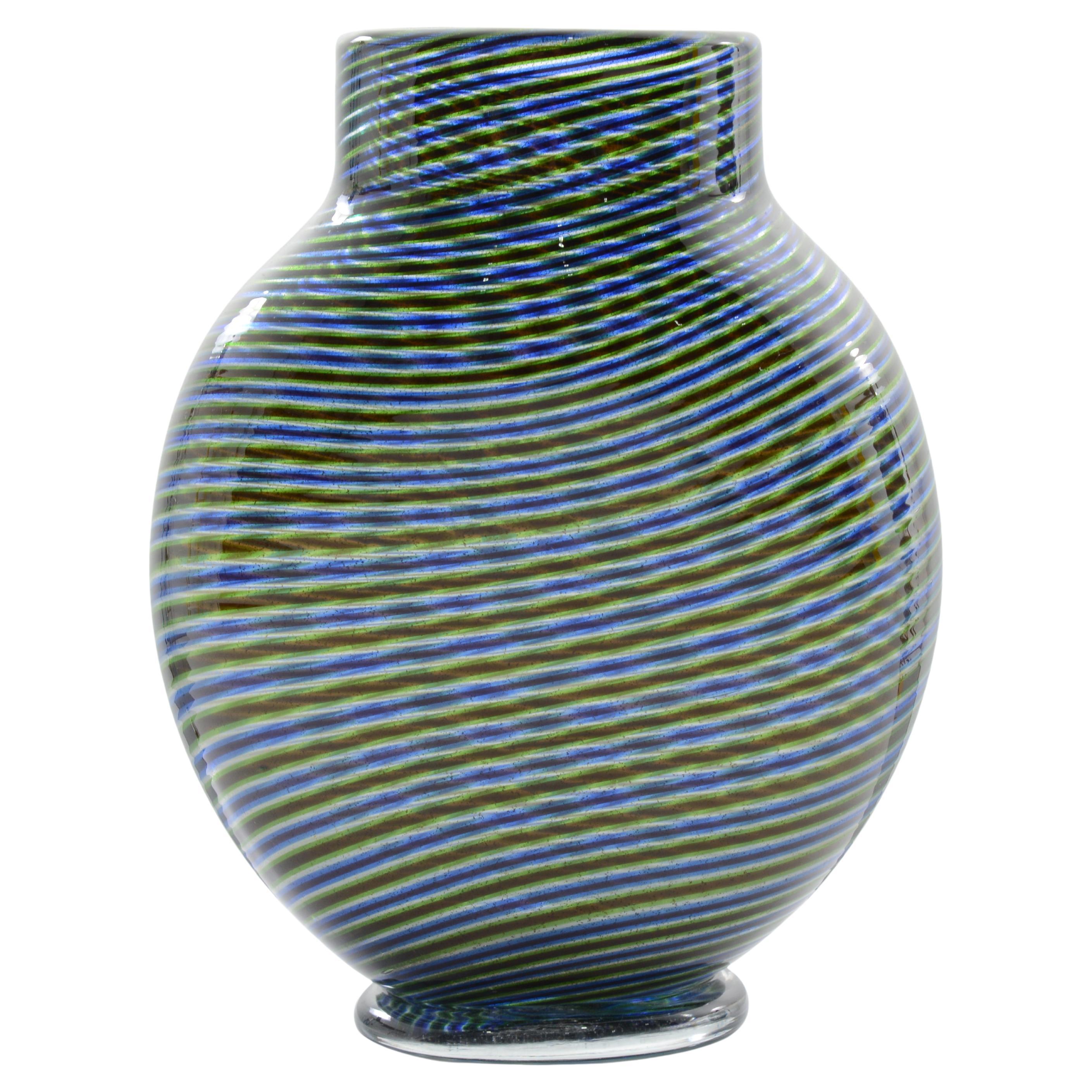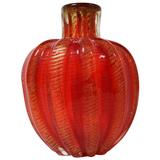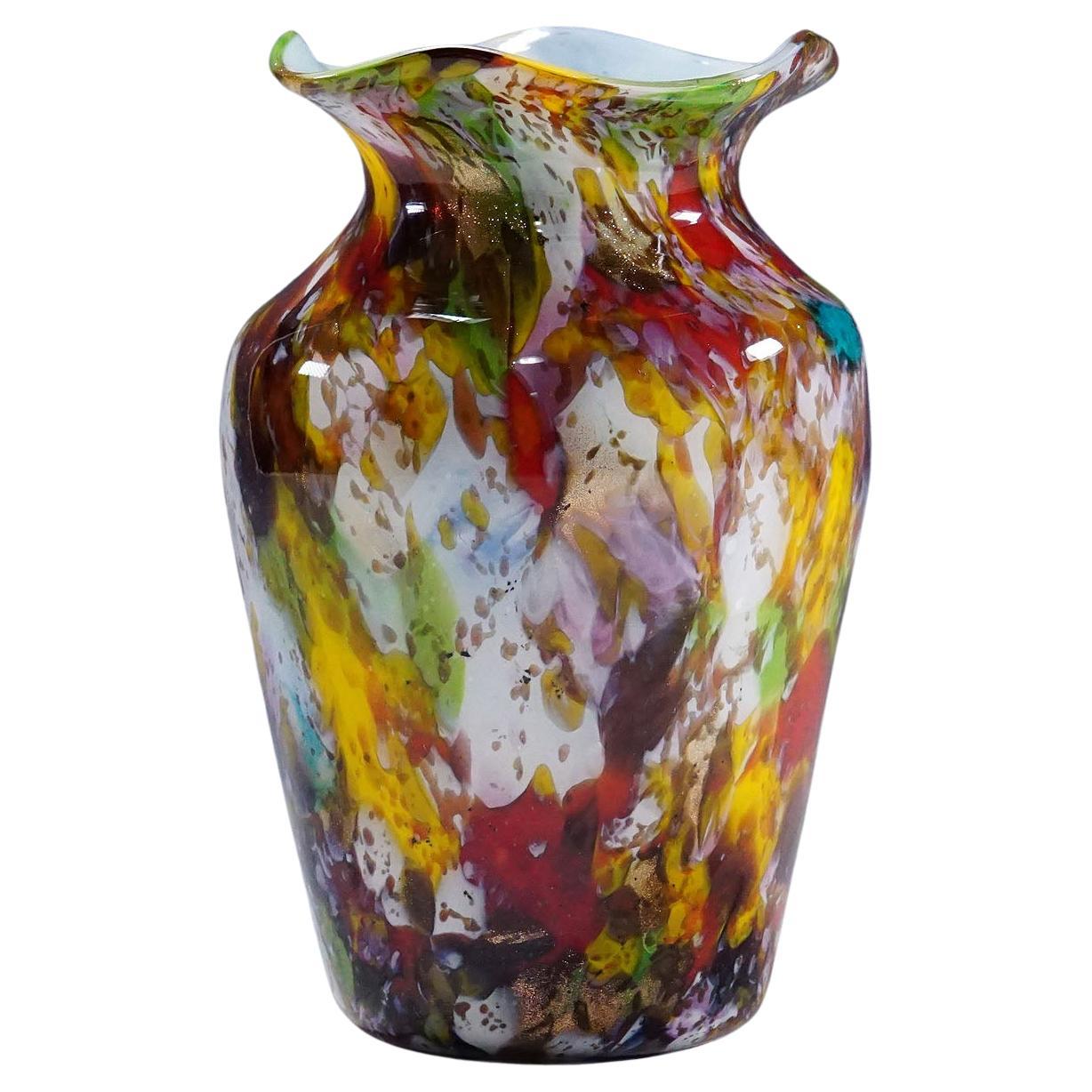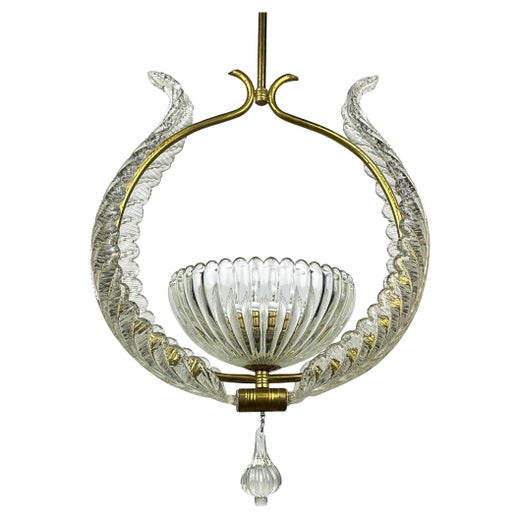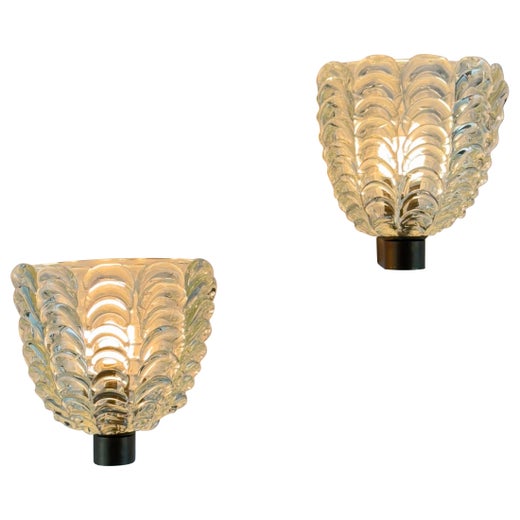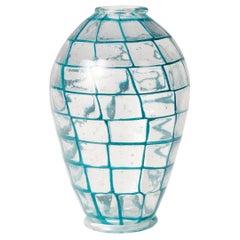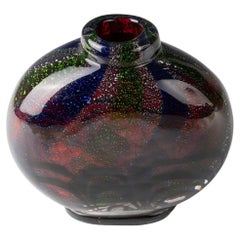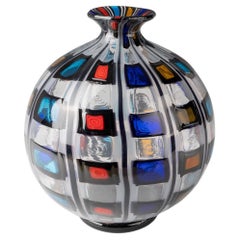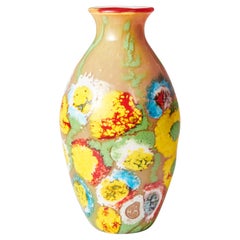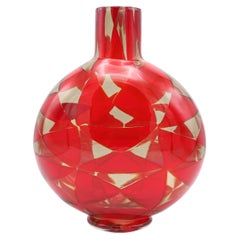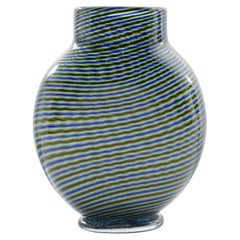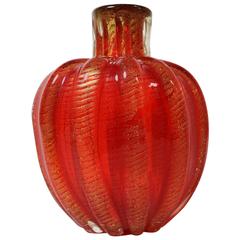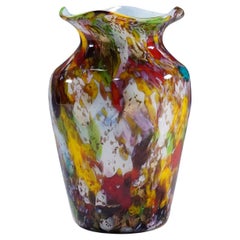Murrine vase Ercole Barovier 1930
About the Item
- Creator:Vetreria Artistica Barovier & C. (Author),Ercole Barovier (Artist)
- Dimensions:Height: 12.21 in (31 cm)Diameter: 6.7 in (17 cm)
- Materials and Techniques:
- Place of Origin:
- Period:
- Date of Manufacture:1930
- Condition:
- Seller Location:Zurich, CH
- Reference Number:1stDibs: LU9988244468262
Ercole Barovier
Ercole Barovier left an indelible mark on the world of Italian modernist glassmaking — his vibrant use of color and exploration of innovative techniques yielded glass vases, chandeliers and other lighting and decorative objects that stand out in any interior many decades later.
Barovier grew up on the Venetian island of Murano, a region of the world famed for its production of artisanal glassworks. By the time he was born, in 1889, his family had already been in the glassmaking business for centuries, as the Barovier dynasty began in 1295. Nonetheless, Barovier did not choose glassmaking as his first career — he instead studied medicine as a young man before going on to work as a radio operator in the first World War.
The year after the war ended, Barovier joined his family’s business (over time, the manufactory’s names have included Fratelli Barovier, Vetreria Artistica Barovier & C. and Artisti Barovier). He was appointed artistic director in 1926, and subsequently managed the business with his brother Nicolò. From 1927 onward, Barovier was the chief designer at his family’s glassworks. He became sole proprietor in 1934, and in 1936, merged his own family business with the Venetian glass factory SAIAR Ferro Toso. They renamed the company Barovier & Toso, a name under which the company still operates today.
Early in his career, Barovier garnered praise for his work with murrine glass, one of the traditional arts for which Murano is widely known. In the 1930s, he began pushing the boundaries of tradition and experimenting with new ways to bring color into his glass objects.
Ercole Barovier is credited with having invented colorazione a caldo senza fusione, a method of introducing metals and oxides into glassworks. His style became defined by his use of riotous color and later, audacious forms. He created sculptures, table lamps and other pieces using mosaic techniques to add a kaleidoscope of striking hues to his work. Barovier had a particular gift to bring out glass’s unique properties to refract and filter light in every shade of the rainbow.
Barovier took endless inspiration from the world around him, from the play of light reflecting off the canals near his home to artworks from classical antiquity. Prior to World War II, his works included naturalistic designs including floral sconces, vine-wrapped chandeliers and sea life-inspired bowls (the manufactory was known for sinuous lighting pieces that are often described as embodying “Liberty Style” — the Italian term for Art Nouveau).
Barovier focused on reinterpreting classical techniques and styles in the postwar years. Geometrically patterned vases that recalled Ancient Greek pottery in their bold forms — as well as precisely detailed Art Deco glass serving bowls — are among his characteristic works from this period. Gold leaf was applied as a decorative flourish, and Barovier worked to ensure that his pieces reflected contemporary trends. His mid-century glass is particularly sought after by today’s collectors.
Up until his retirement in 1972, Barovier continued his exploration of the creative potential in glassmaking. His fearlessness in combining cutting-edge techniques with deeply traditional practices led him to create over 25,000 designs over the course of his life.
Barovier’s work garnered international acclaim. He received many awards and accolades, including awards at the Milan Triennial exhibitions in 1933 and 1954, the Paris Universal Exhibition in 1937, and the Compasso d'Oro in 1956.
On 1stDibs, find vintage Ercole Barovier lighting, decorative objects and serveware.
Vetreria Artistica Barovier & C.
The still-thriving glassworks known today as Barovier&Toso, revered for its catalogue of exquisite mouth-blown chandeliers, sconces and table lamps, originated on the Venetian island of Murano, a region of the world famed for its production of artisanal glassworks. In its early years, the firm traded under the name Vetreria Artistica Barovier & C.
The Barovier dynasty began in 1295, when Jacobello Barovier, mentioned in historical documents as a master glassblower, began pinching, cutting, blowing and twisting a molten mixture of sand and minerals into incandescent works of art. It remained entirely family-owned until the mid-20th century, when it merged with another glassworks to become Barovier&Toso.
Under the nearly 50-year artistic directorship of Barovier&Toso cofounder Ercole Barovier (1889–1974), the company created buoyant traditional pieces such as pendants and wall lights, and it pioneered an array of innovative modernist designs with bold colors, patterns and surfaces.
By the time Ercole Barovier was born, in 1889, his family had already been in the glassmaking business for centuries. Nonetheless, Ercole did not choose glassmaking as his first career — he instead studied medicine as a young man before going on to work as a radio operator in the first World War.
The year after the war ended, Ercole joined his family’s business (over time, in addition to Vetreria Artistica Barovier & C., the manufactory’s names have also included Fratelli Barovier and Artisti Barovier). Ercole was appointed artistic director in 1926, and subsequently managed the business with his brother Nicolò.
From 1927 onward, Ercole Barovier was the chief designer at his family’s glassworks. His style became defined by his use of riotous color and later, audacious forms. Ercole created sculptures, table lamps and other pieces using mosaic techniques to add a kaleidoscope of striking hues to his work. Early in his career, he garnered praise for his work with murrine glass, one of the traditional arts for which Murano is widely known. He became sole proprietor in 1934 and, in 1936, merged his own family business with the Venetian glass factory SAIAR Ferro Toso. They renamed the company Barovier&Toso, a name under which the firm still operates today.
To appeal to gentler, more conservative tastes, Barovier&Toso produced a range of lilting, sinuous lighting pieces that are often described as embodying “Liberty Style” — the Italian term for Art Nouveau, taken from the name of famed London department store Liberty & Co., which promoted 19th-century organic textile designs and Arts and Crafts-style furniture in the manner of William Morris. The hallmarks of the style in Barovier&Toso works are elements of glass in the shape of thick leaves, fronds and flower petals, deployed along with other naturalistic ornament in sconces, pendants and chandeliers.
Traditional or modern, Barovier&Toso has produced one of the finest and most diverse catalogues of Murano glass in the last 100 years.
Find antique Vetreria Artistica Barovier & C. lighting and decorative objects on 1stDibs.
- ShippingRetrieving quote...Shipping from: Zurich, Switzerland
- Return Policy
More From This Seller
View AllVintage 1930s Italian Vases
Murano Glass
Vintage 1940s Italian Vases
Murano Glass
Vintage 1960s Italian Vases
Murano Glass
Vintage 1920s Italian Vases
Murano Glass
Vintage 1950s Italian Vases
Murano Glass
Vintage 1950s Vases
Murano Glass
You May Also Like
Vintage 1960s Italian Mid-Century Modern Vases
Art Glass
Late 20th Century Italian Mid-Century Modern Vases
Blown Glass
Mid-20th Century Italian Mid-Century Modern Vases
Art Glass
Early 20th Century Italian Mid-Century Modern Vases
Art Glass, Murano Glass
20th Century Italian Mid-Century Modern Vases
Gold Leaf
Vintage 1950s Italian Mid-Century Modern Vases
Murano Glass
